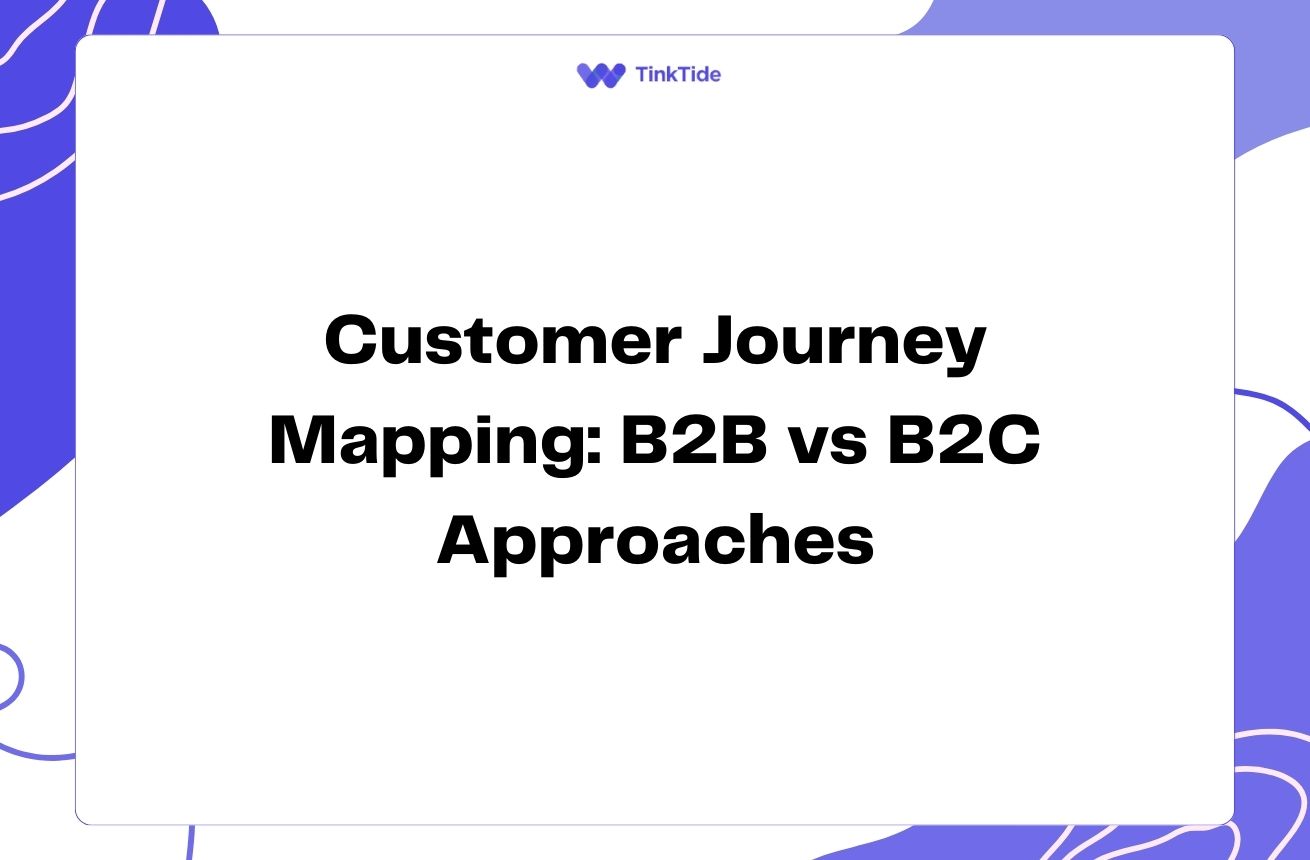Enhancing Product Development with Customer Journey Mapping
Understanding Customer Journey Mapping
Customer journey mapping is a powerful tool that visualizes the entire experience a customer has with your product or service. It's a detailed representation of every touchpoint and interaction, from initial awareness to post-purchase support.
By creating a customer journey map, businesses can gain valuable insights into their customers' needs, pain points, and expectations. This comprehensive view allows product developers to identify areas for improvement and innovation.
In the context of product development, customer journey mapping can be a game-changer. It provides a user-centric approach to design and development, ensuring that the final product truly meets customer needs and expectations.
According to a study by McKinsey, companies that leverage customer journey mapping see a 10-15% increase in revenue and a 15-20% reduction in service costs.
Key Benefits of Customer Journey Mapping in Product Development
Integrating customer journey mapping into your product development process offers numerous advantages:
- Identifies pain points and opportunities for innovation
- Aligns product features with actual customer needs
- Improves user experience and customer satisfaction
- Reduces development costs by focusing on high-impact features
- Enhances cross-functional collaboration within the organization
Creating a Customer Journey Map for Product Development
To create an effective customer journey map for product development, follow these steps:
1. Define your customer personas: Start by creating detailed profiles of your target users. Include demographics, goals, challenges, and preferences.
2. Identify key touchpoints: List all the interactions a customer has with your product, from discovery to purchase and beyond.
3. Map the customer's actions, thoughts, and emotions: For each touchpoint, document what the customer is doing, thinking, and feeling.
4. Highlight pain points and opportunities: Identify areas where customers struggle or where their needs are not being met.
Applying Journey Mapping Insights to Product Development
Once you have a comprehensive customer journey map, it's time to apply these insights to your product development process:
1. Prioritize features: Use the journey map to identify which features will have the most significant impact on the customer experience.
2. Refine user interfaces: Optimize your product's UI based on the emotions and pain points identified in the journey map.
3. Improve onboarding: Enhance the initial user experience by addressing common challenges new users face.
4. Develop targeted marketing: Create marketing messages that resonate with customers at different stages of their journey.
Continuous Improvement Through Journey Mapping
Customer journey mapping is not a one-time exercise. It should be an ongoing process that evolves with your product and customer base:
1. Regularly update your journey maps: As your product evolves and customer behaviors change, update your maps to reflect these shifts.
2. Collect and analyze customer feedback: Use surveys, interviews, and analytics to continuously refine your understanding of the customer journey.
3. Iterate on your product: Use the insights from updated journey maps to make iterative improvements to your product.
4. Monitor key performance indicators (KPIs): Track metrics like customer satisfaction, retention rates, and feature adoption to measure the impact of your journey-informed improvements.
Overcoming Common Challenges in Journey Mapping
While customer journey mapping is invaluable, it can present some challenges:
- Data overload: Focus on the most critical touchpoints and insights
- Cross-functional alignment: Ensure all teams understand and use the journey map
- Keeping maps up-to-date: Establish a regular review and update process
- Balancing multiple personas: Create separate maps for key customer segments
- Translating insights into action: Develop clear action plans based on journey map findings
Tools and Technologies for Customer Journey Mapping
Several tools can help streamline your customer journey mapping process:
1. Lucidchart: A versatile diagramming tool that's great for creating visual journey maps.
2. Miro: An online collaborative whiteboard platform ideal for team-based journey mapping.
3. Smaply: A specialized customer journey mapping tool with features like persona creation and touchpoint analysis.
4. UXPressia: A comprehensive CX platform that includes journey mapping, persona creation, and impact mapping.
Case Studies: Success Stories in Journey-Driven Product Development
Many companies have successfully used customer journey mapping to enhance their product development:
1. Airbnb: Used journey mapping to identify and address pain points in the booking process, leading to a more streamlined user experience.
2. Spotify: Leveraged journey mapping to create personalized playlists and improve music discovery features.
3. Amazon: Continuously refines its customer journey map to enhance its recommendation engine and simplify the purchasing process.
These examples demonstrate how journey mapping can lead to tangible improvements in product features and user satisfaction.
Address common questions
Here are some frequently asked questions about customer journey mapping in product development:
How often should we update our customer journey maps?
It's recommended to review and update your journey maps at least quarterly, or whenever significant changes occur in your product or market. Regular updates ensure your maps remain relevant and continue to provide valuable insights for product development.
Can customer journey mapping be used for B2B products?
Absolutely. While B2B journeys may be more complex, involving multiple stakeholders and longer decision-making processes, journey mapping can still provide valuable insights. Focus on mapping the journey of key decision-makers and users within the client organization.
How do we measure the ROI of customer journey mapping?
Measure the impact of journey-informed improvements on key metrics such as customer satisfaction scores, retention rates, feature adoption, and revenue growth. Compare these metrics before and after implementing changes based on journey mapping insights.
What's the difference between a customer journey map and a user flow?
A user flow focuses on the specific steps a user takes within your product to complete a task. A customer journey map is broader, encompassing the entire experience a customer has with your brand, including touchpoints before and after using the product.
How can we involve customers in the journey mapping process?
Engage customers through surveys, interviews, and usability testing. You can also create customer advisory boards or conduct co-creation workshops where customers participate directly in the journey mapping process.
Can AI be used in customer journey mapping?
Yes, AI can enhance journey mapping by analyzing large datasets to identify patterns and predict customer behavior. It can help personalize journey maps, automate data collection, and provide real-time insights into customer interactions.
Provide additional resources
Customer Journey Mapping Guide
A comprehensive guide to creating effective customer journey maps by Nielsen Norman Group
Journey Mapping 101
An introduction to customer journey mapping from the Interaction Design Foundation
Journey Mapping Tools Comparison
A comparison of various customer journey mapping tools on Capterra
The Business Value of Customer Journey Maps
Harvard Business Review article on the strategic importance of journey mapping
Journey Mapping Best Practices
Forrester report on modernizing customer journey mapping practices
Summarize key takeaways
Customer journey mapping is a powerful tool that can significantly enhance the product development process. By providing a comprehensive view of the customer experience, it enables businesses to create products that truly meet user needs and expectations.
Implementing journey mapping in your product development workflow can lead to improved user satisfaction, increased revenue, and reduced development costs. It's a strategic approach that aligns product features with actual customer needs and pain points.
To leverage the full potential of customer journey mapping, make it an ongoing process, involve cross-functional teams, and use the insights to drive continuous improvement in your products. By putting the customer at the center of your development process, you'll be well-positioned to create products that resonate with your target audience and stand out in the market.
Enhance Your Product Development with Customer Journey Mapping
Ready to transform your product development process? Start mapping your customer's journey today.
Start Your Free Trial
